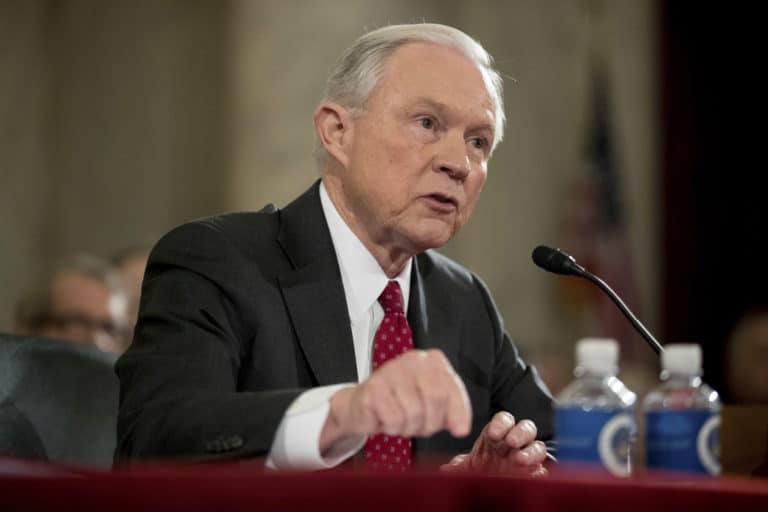It’s looking more and more likely that voters in a key battleground state will be voting on marijuana legalization in November, and recent polling suggests it could win. That’s this November, not November 2016.
The state is Ohio, where a controversial pot legalization initiative is already well on the way to qualifying for the ballot, and its backers—or should we say investors?–have the cash on hand to make sure it does.
There are pot legalization bills pending in any number of states, and early on, there were hopes this would be the year a state legislature would get around to legalizing it. New England states such as Maine, Massachusetts, and Vermont looked like the best bets, but it now doesn’t seem like it’s going to happen.
And 2016 promises to see a wave of legalization initiatives—think Arizona, California, Nevada, Maine, and Massachusetts, for starters, with Arkansas, Michigan, Missouri, and Ohio also likely to see serious efforts emerge.
But that’s next year. The group ResponsibleOhio is well on the way to putting the issue before Buckeye State voters this year. They’ve already had their proposed constitutional amendment approved for signature gathering and, thanks to paid signature-gatherers, are cruising toward qualifying for the ballot.
To qualify in Ohio, initiatives need 305,000 valid voter signatures; ResponsibleOhio collected 180,000 raw signatures in its first three weeks and still has more than two months to gather the rest. And the campaign is still expanding.
Veteran initiative watchers will tell you campaigns want a cushion of excess signatures to account for ones that are thrown out, maybe 25% to 30% above the requirement at a bare minimum. In Ohio this year, that would be 400-450,000 raw signatures. The campaign says they are aiming for 700,000.
Given the progress so far, and the organization and money behind it (see below), ResponsibleOhio’s legalization initiative looks like it will qualify for the ballot.
A New Legalization Model
This is not legalization like we’ve seen anywhere else. Yes, it allows adults 21 and over to grow and possess limited amounts of marijuana and yes, it calls for a system of regulated and taxed marijuana production and sales. And it even has provisions for medical marijuana.
But under ResponsibleOhio’s initiative, commercial marijuana production can only take place at 10 sites in the state, and those sites have already been allocated to 10 sets of investors, who have already kicked in $1.7 million for the campaign so far and who are prepared to spend up to $20 million convincing the public to vote for it.
The investors include a number of Ohio business interest—real estate developers, venture capital firms, philanthropists, with nary a Cheech or a Chong among them—but also some home state big names that could sway public opinion. These include NBA legend Oscar “Big O” Robertson, Cincinnati-based fashion designer Nanette Lepore, and former Cincinnati Bengals and Cleveland Browns defensive end Frostee Rucker (now with the Arizona Cardinals).
In return for their hoped-for voter-granted monopoly, the investor groups would pay a $100,000 fee and a 15% tax on their gross revenues, as well as other commercial fees. Critics have charged that the plan freezes out all but the initial investor groups, but ResponsibleOhio counters that there will be plenty of commercial opportunities in making and selling marijuana products.
The ResponsibleOhio plan has raised a lot of hackles among movement veterans such as NORML founder Keith Stroup, who voices widely-held worries about the impact of big money in the movement and Ohio activists, some of whom have their own initiative plans, but they may not matter as much as suburban Columbus soccer moms when it comes to election day.
And while this written-in monopoly may seem strange to many, it’s not going to seem that strange to Ohio voters. In 2009, they legalized gambling by approving a constitutional amendment that specified sites for four casinos owned by the companies backing the amendment.
Can It Win?
Initiatives need to have money, momentum, and votes to win.
ResponsibleOhio looks to have deep enough pockets to put on a full-scale, multi-million dollar advertising campaign. Estimates are that to win in California next year, legalizers will have to spend $10 million or so in advertising, but ResponsibleOhio is talking about spending up to $20 million in a much smaller media market, and it doesn’t have to go begging to donors.
The momentum is there. The entire country is riding a wave of increasing support for marijuana legalization, and Ohio is no exception. A Quinnipiac University poll last month had support at 53% (it also had narrow majorities for legalization in swing states Florida and Pennsylvania), up two points from the same poll a year earlier.
The conventional wisdom is that initiatives should be polling 60% or more at the beginning of the campaign because they are bound to lose some support in the face of organized opposition. But when it comes to marijuana, these hardly seem like conventional times. National polls show an upward trend, and Ohio polls show an upward trend. Whether it can win at the polls in an off-off-year election remains to be seen (the casino initiative did), but it certainly looks like it’s going to be on the ballot, and it’s got a very good shot on Election Day.
Ohio isn’t the West Coast or New England. It’s a mid-sized Midwest swing state critical in presidential politics. If Ohio legalizes it this year, the politics of pot is going to get very, very interesting next year.
Article From StoptheDrugWar.org – Creative Commons Licensing – Donate









